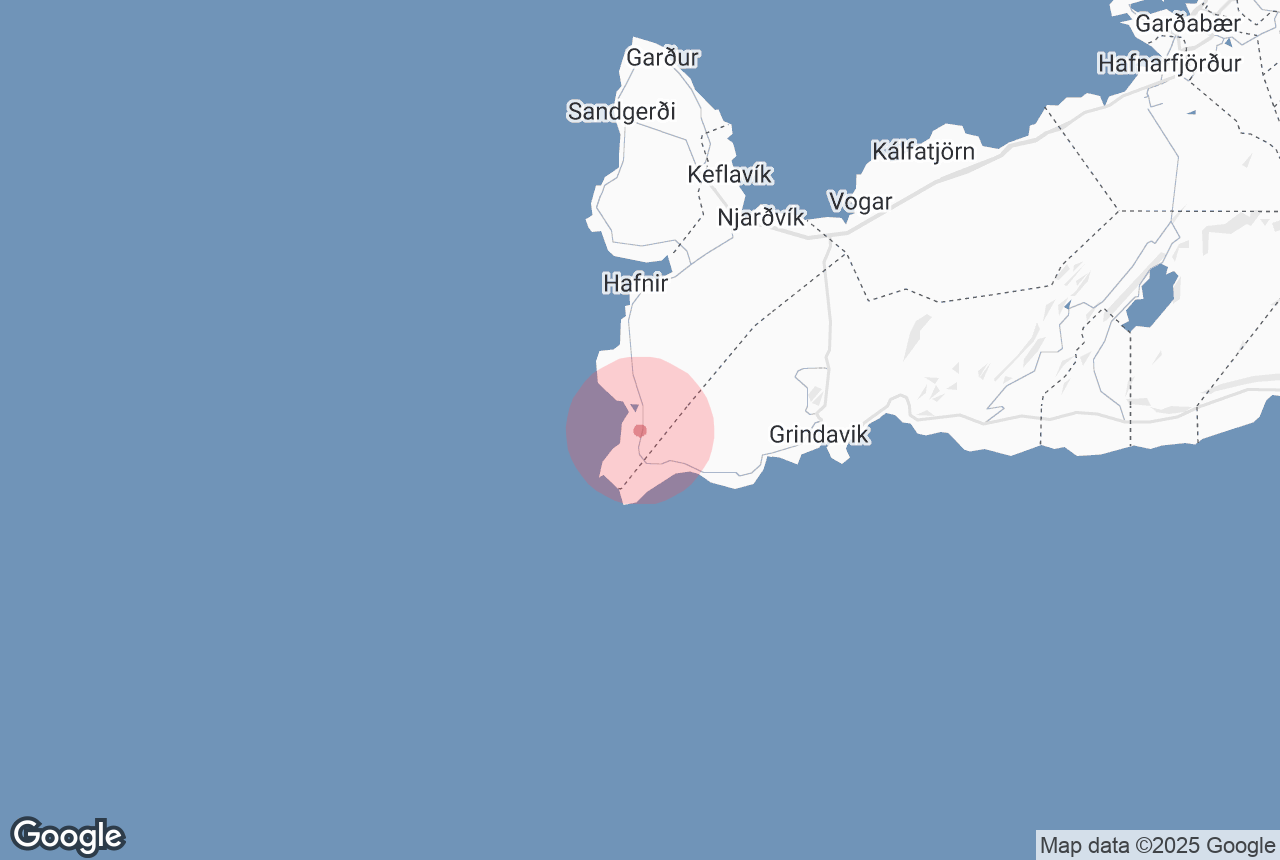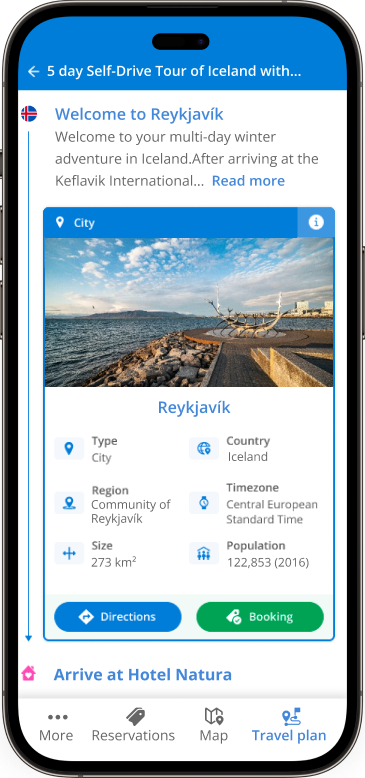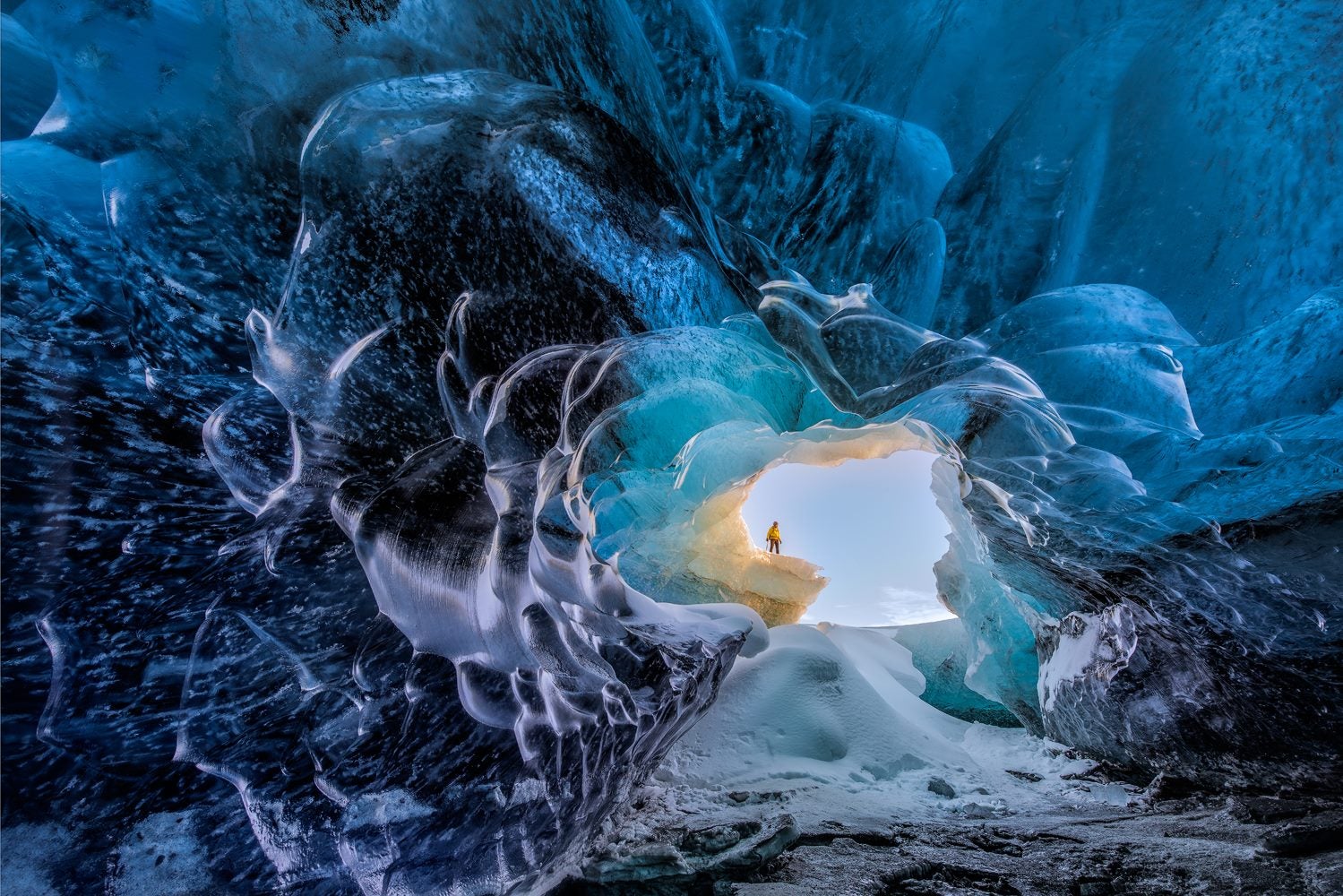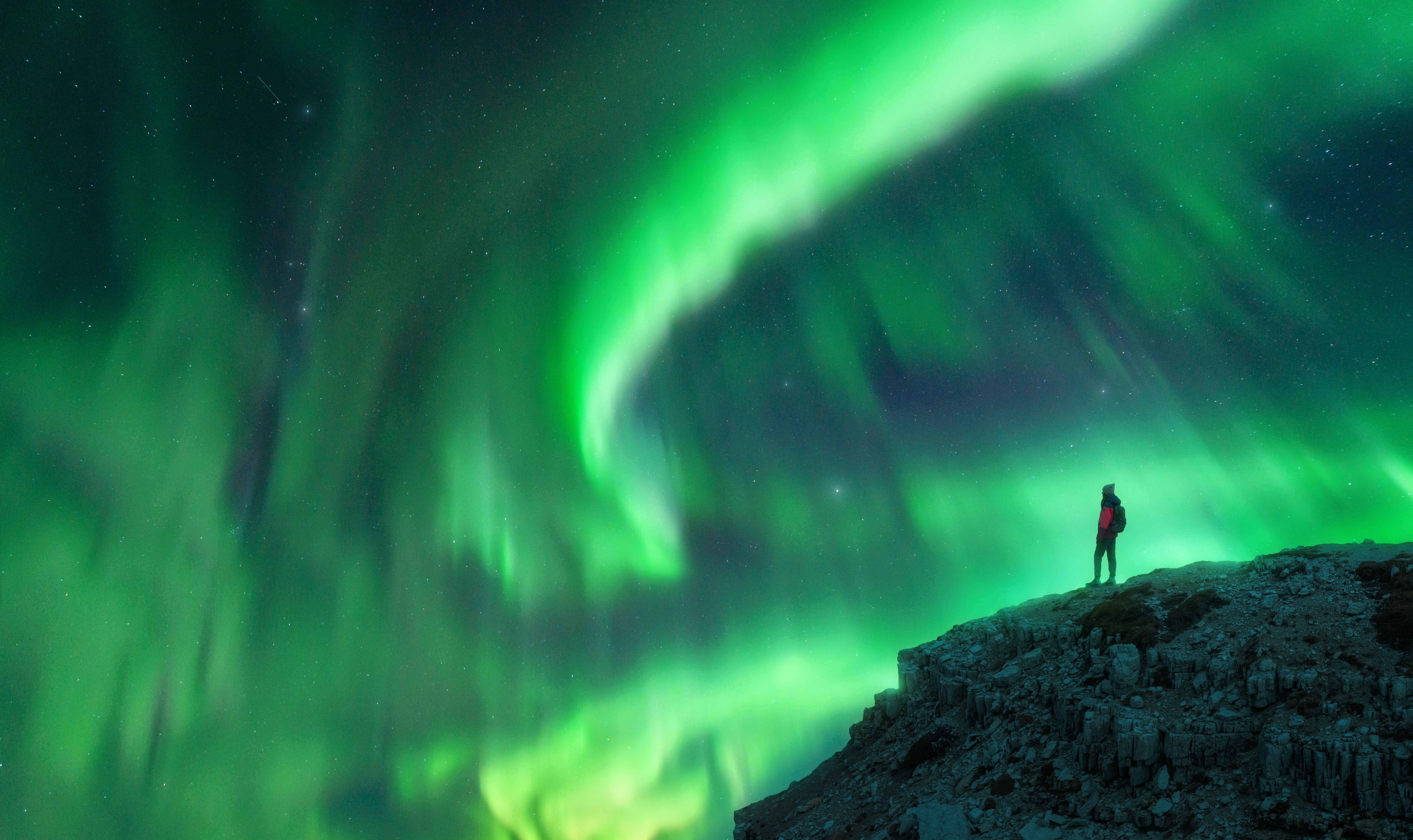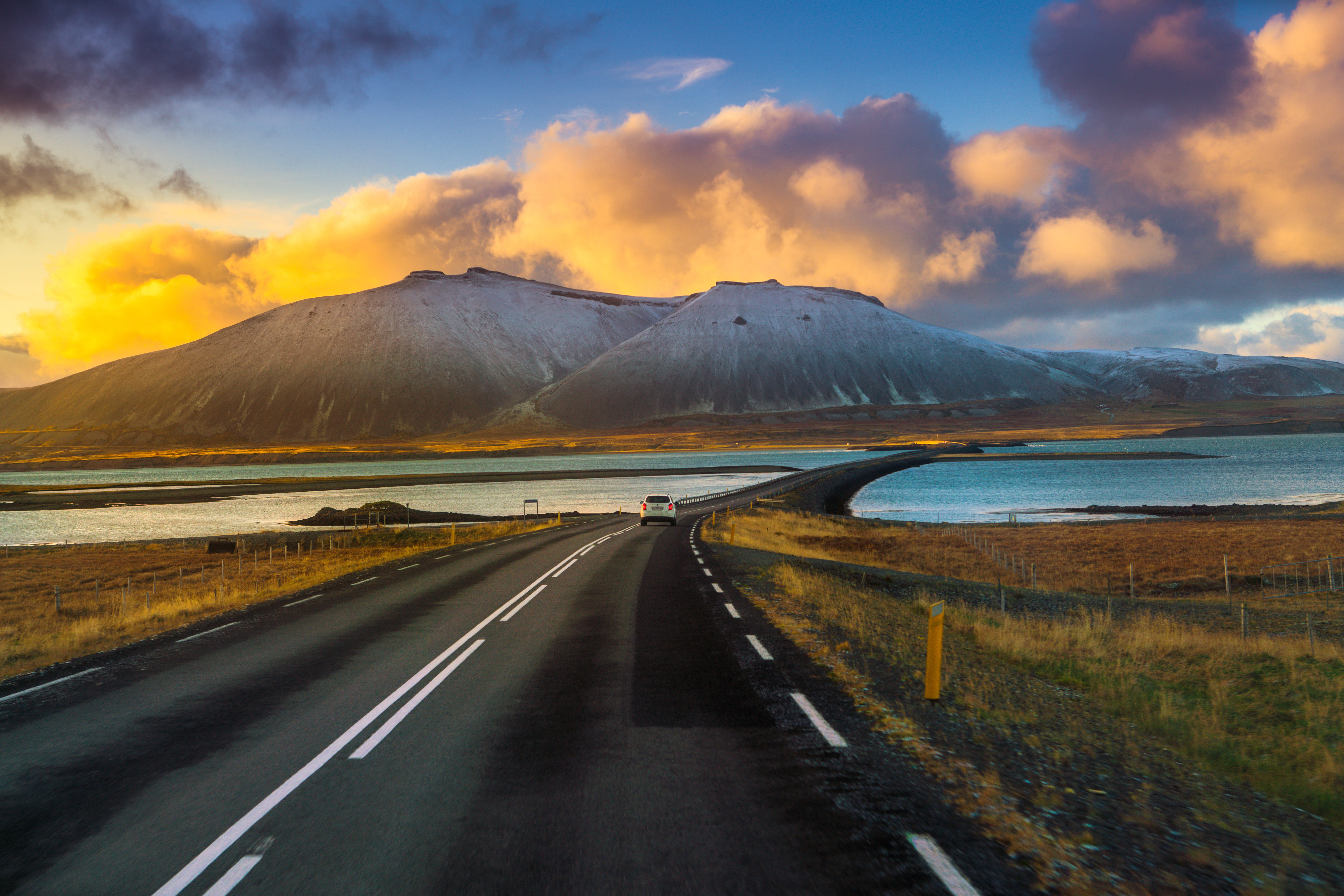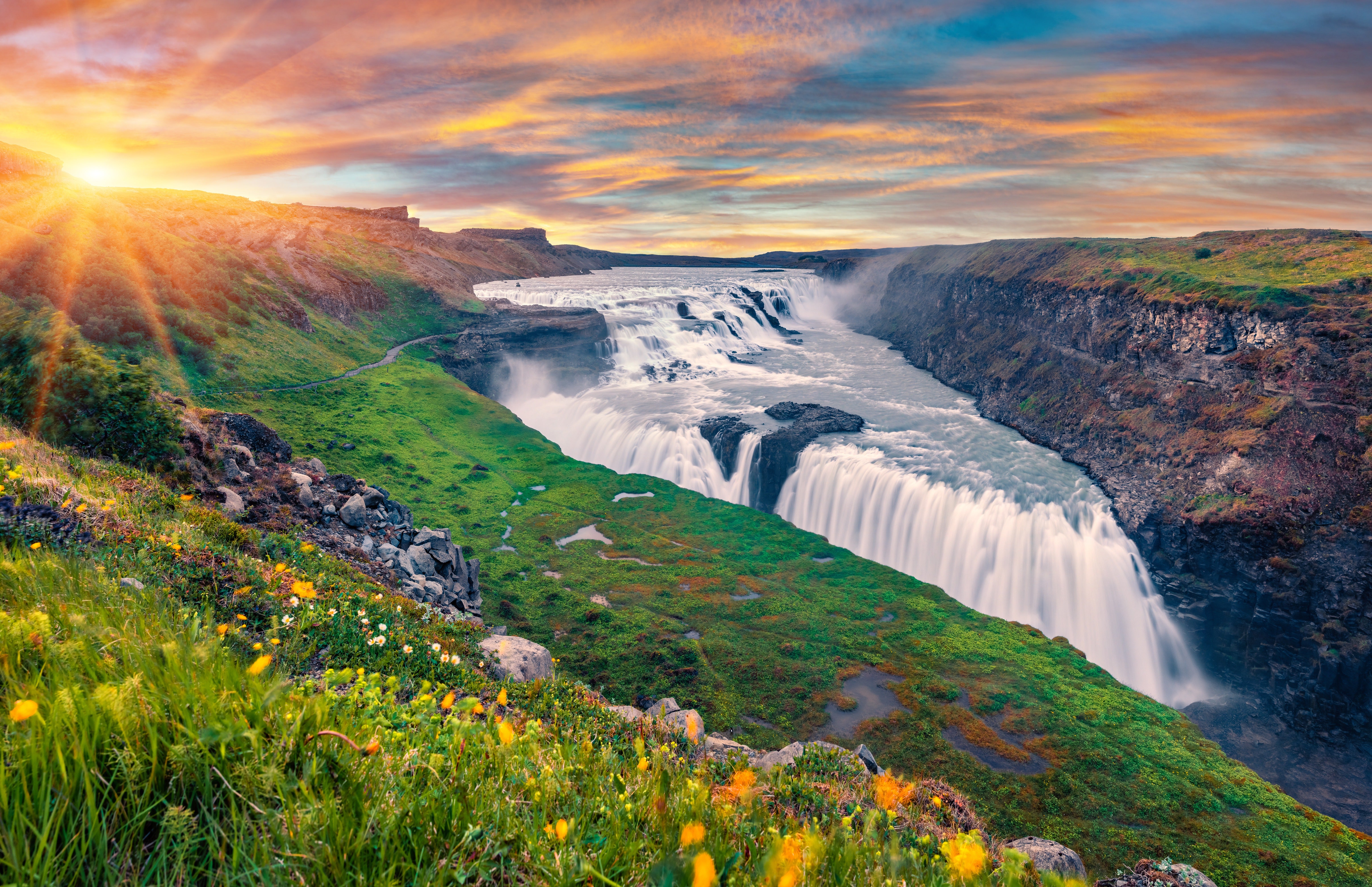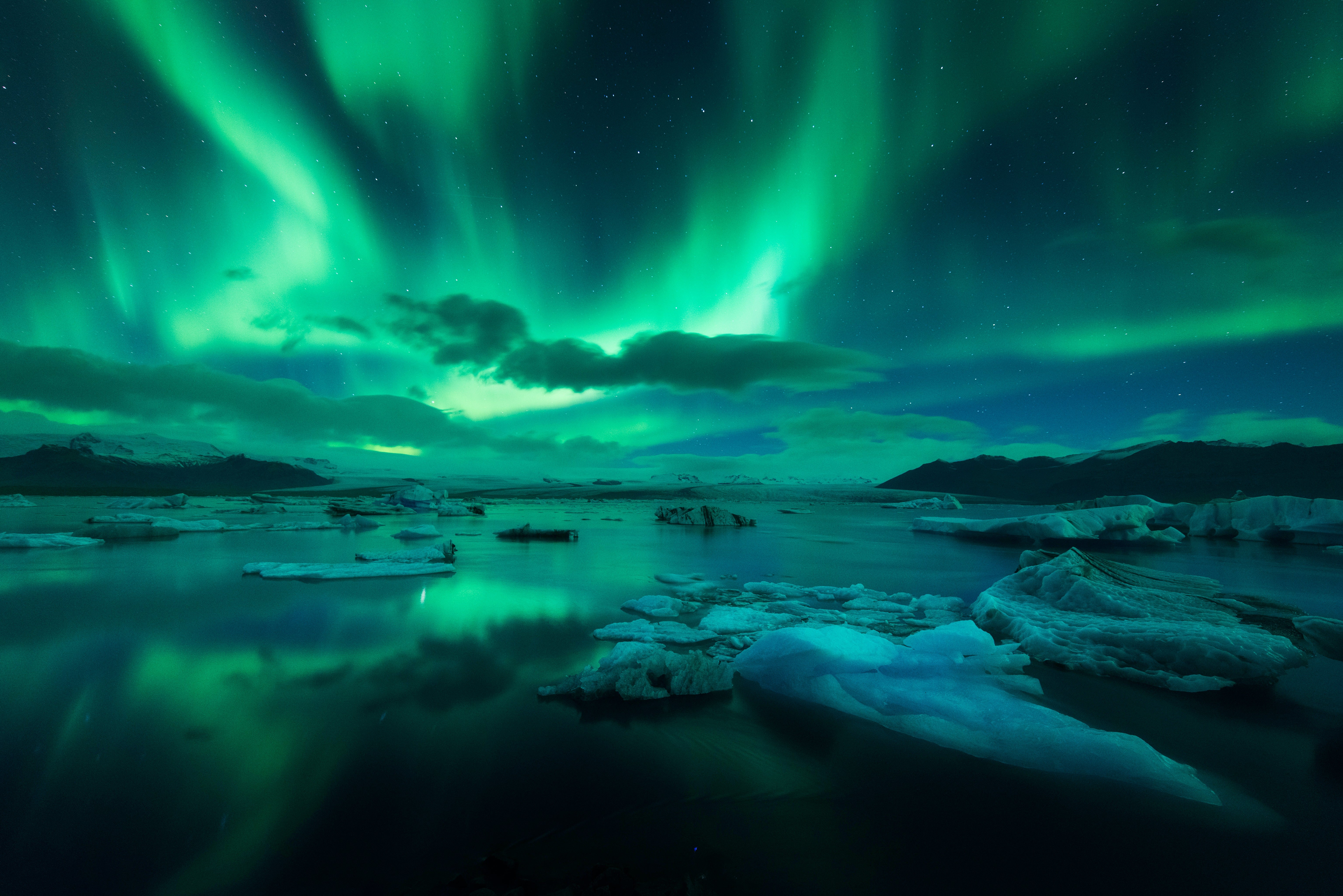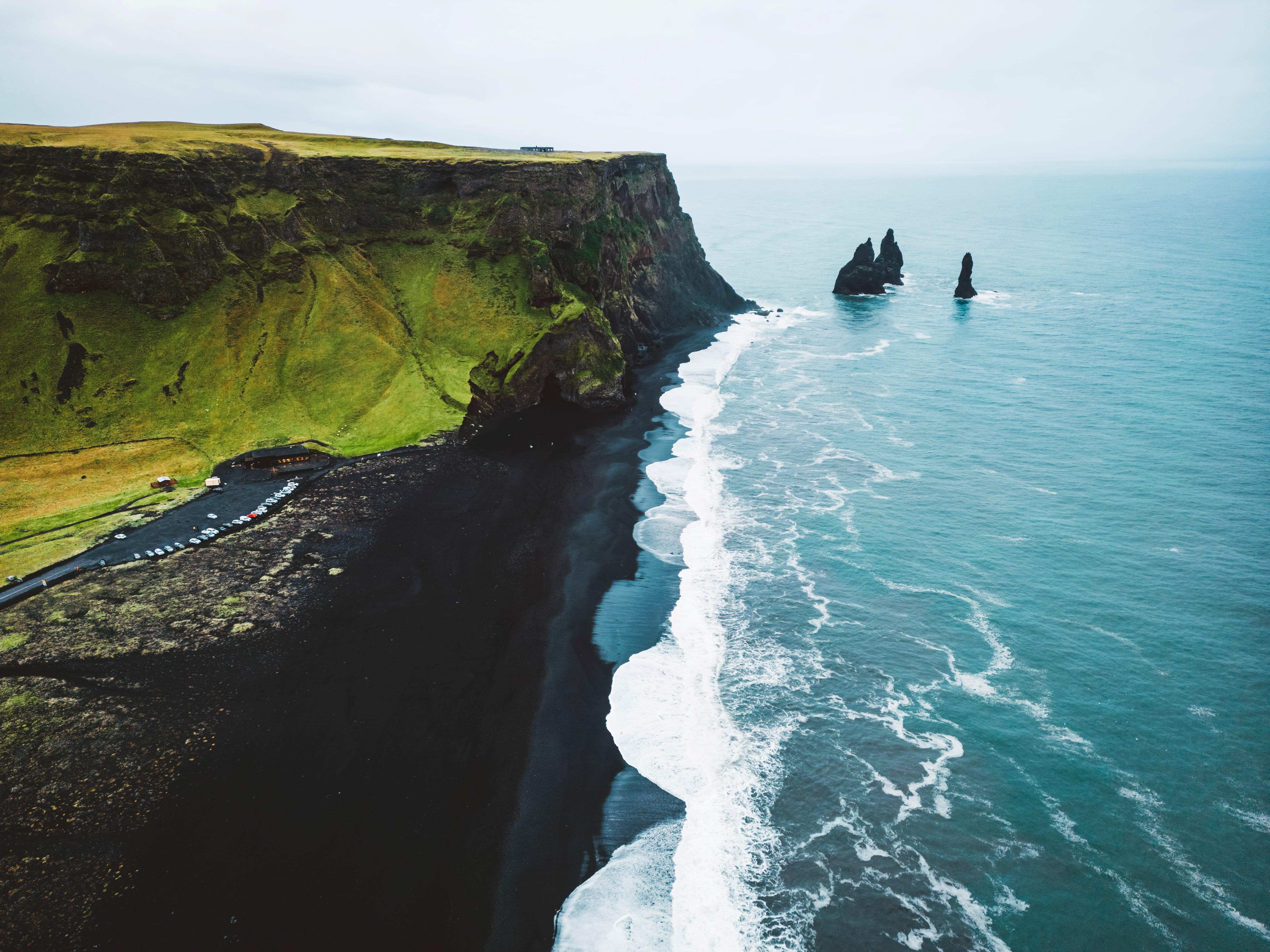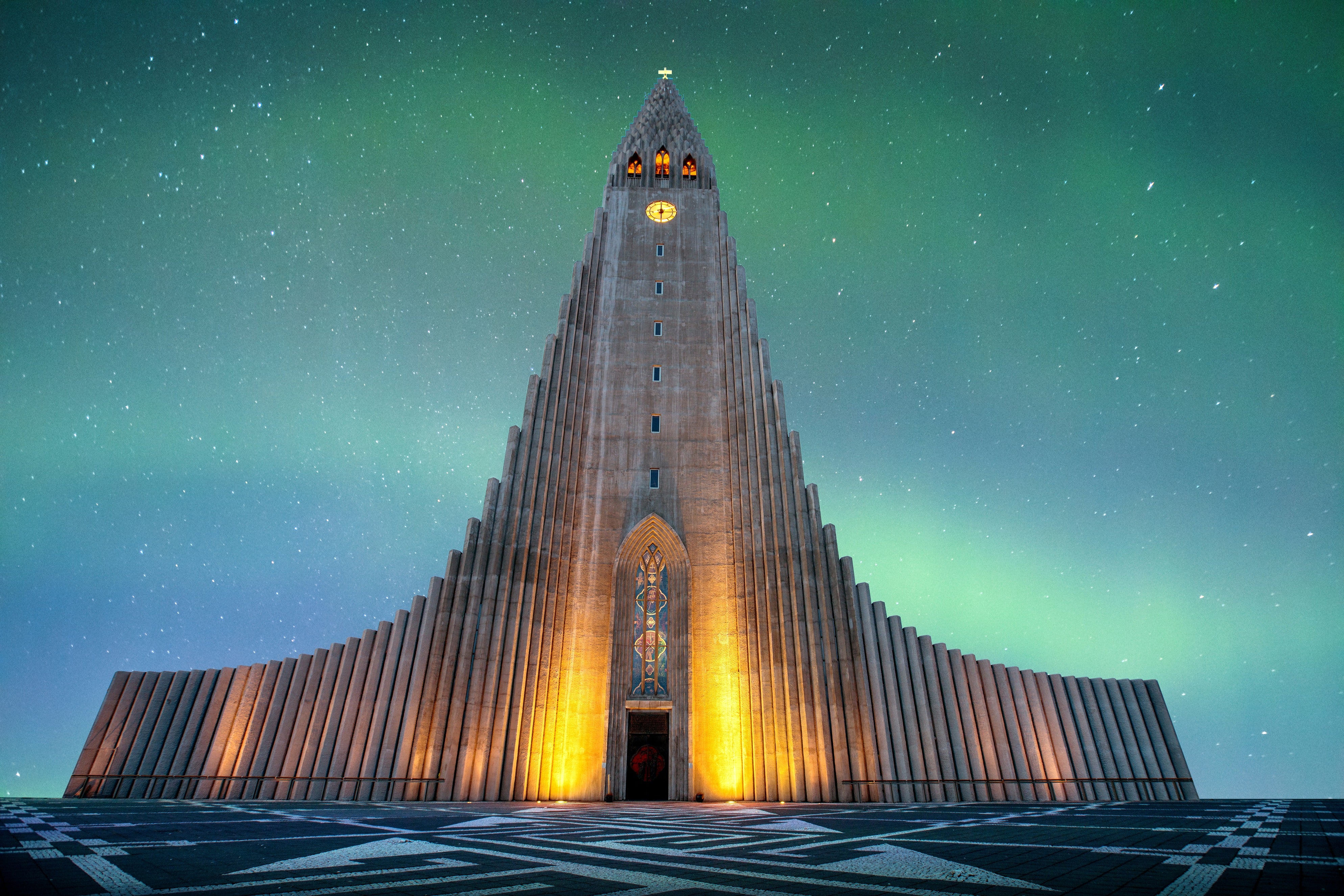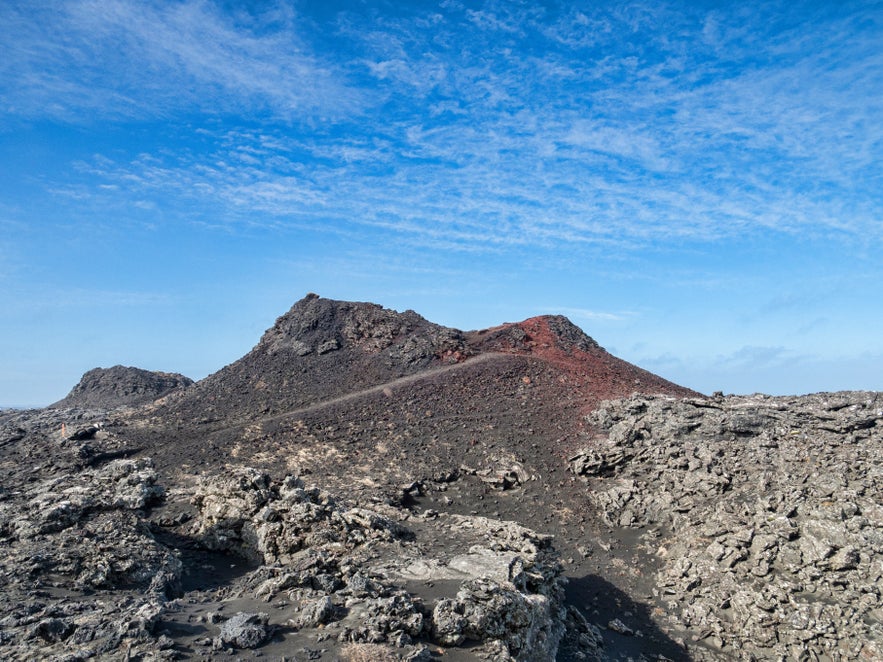
This surreal, moonlike terrain is the kind of place that makes you pull over mid-drive, especially with steam curling into the sky from nearby geothermal vents as your only landmark. Though easy to miss, a small lay-by and sign offer quick access to the rim of a crater, where you can walk along its edge and take in the raw, crater-pocked horizon.
Whether you're detouring from Route 425 or heading back from the Blue Lagoon, this short stop reveals just how alive Iceland’s landscape still is.
Why You Can Trust Our Content
Guide to Iceland is the most trusted travel platform in Iceland, helping millions of visitors each year. All our content is written and reviewed by local experts who are deeply familiar with Iceland. You can count on us for accurate, up-to-date, and trustworthy travel advice.
Key Takeaways
- Underrated Volcanic Landmark: Stampar Crater Row is a dramatic line of ancient craters formed during 13th-century fissure eruptions on the Reykjanes Peninsula. It’s quiet, raw, and often overlooked.
- Quick and Easy Stop: Just off Route 425, it's an ideal pull-off with a small lay-by and signpost. You can walk to the crater rim in minutes and take in sweeping views of the surrounding lava fields.
- Geological Significance: Part of the Reykjanes UNESCO Global Geopark, this site showcases Iceland’s dynamic volcanic forces, where lava once erupted through a long fissure to form a chain of mini-volcanoes.
- Best Time to Visit: Accessible year-round, though spring through early autumn offers better weather, clearer skies, and easier walking conditions for exploring the crater rim and nearby trails.
How Stampar Crater Row Was Formed
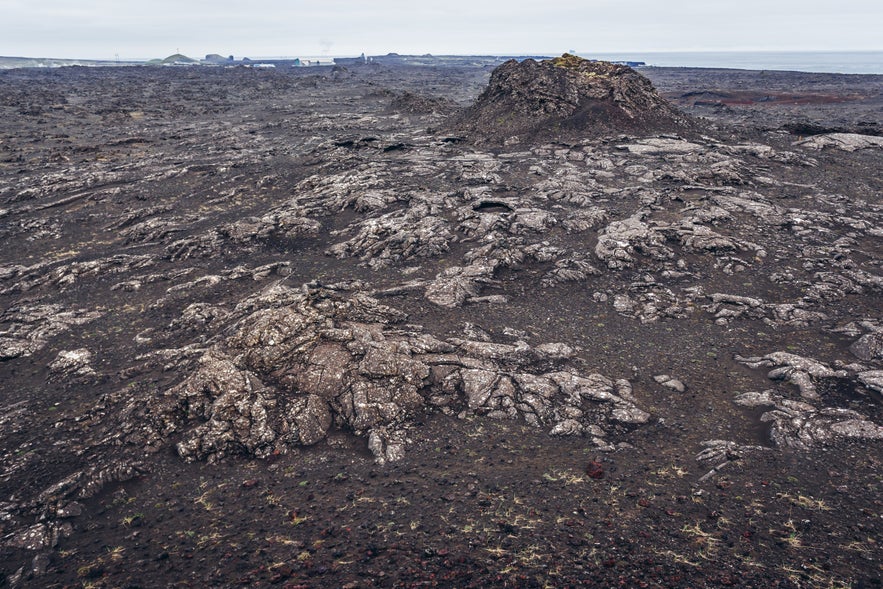 Part of the Reykjanes UNESCO Global Geopark, Stampar Crater Row lies in one of the most volcanically active zones in Iceland.
Part of the Reykjanes UNESCO Global Geopark, Stampar Crater Row lies in one of the most volcanically active zones in Iceland.
The craters were created by powerful fissure eruptions—when magma forces its way up through long, narrow cracks in the Earth’s crust, rather than erupting from a single volcanic peak. This process carved out a jagged line of mini-volcanoes that stretches across the lava plains of the Reykjanes Peninsula, pointing northeast toward the Atlantic Ocean.
The crater row consists of two distinct parallel fissures, each from a different eruptive period.
The older row formed around 1,800 to 2,000 years ago during an eruption along a fissure just under 2.5 miles (4 kilometers) long. The younger row, including the craters known today as Stampar, was formed during the Reykjanes Fires, a series of intense volcanic events that occurred between 1210 and 1240 AD.
 This later eruption produced a lava field covering approximately 1.8 square miles (4.6 square kilometers) and gave rise to the dramatic crater chain visible today. Aside from reshaping the peninsula, submarine eruptions were also recorded just offshore during the Reykjanes Fires, emphasizing the raw, ongoing power of this tectonically active zone.
This later eruption produced a lava field covering approximately 1.8 square miles (4.6 square kilometers) and gave rise to the dramatic crater chain visible today. Aside from reshaping the peninsula, submarine eruptions were also recorded just offshore during the Reykjanes Fires, emphasizing the raw, ongoing power of this tectonically active zone.
The craters lie along a southwest-to-northeast axis, reflecting the dominant orientation of fissures across the Reykjanes Peninsula.
Closest to Route 425 are the northernmost craters, including the namesake Stampar. Further south are larger cones such as Midaholl (Miðahóll), Eldborg the Deeper, and Eldborg the Shallower. Fishermen once used these as navigational landmarks at sea.
While most of the craters are low-lying scoria cones (cone-shaped formations made from volcanic fragments), they still form a striking geological corridor.
The New Reykjanes Fires (2021 to Present)
 After more than 800 years of dormancy, the Reykjanes Peninsula has entered a new period of volcanic activity. It began in March 2021 with the eruption at Fagradalsfjall Volcano, the first in the region since the 13th century. Since then, geologists have referred to this ongoing period as the New Reykjanes Fires, a modern counterpart of Stampar Crater Row.
After more than 800 years of dormancy, the Reykjanes Peninsula has entered a new period of volcanic activity. It began in March 2021 with the eruption at Fagradalsfjall Volcano, the first in the region since the 13th century. Since then, geologists have referred to this ongoing period as the New Reykjanes Fires, a modern counterpart of Stampar Crater Row.
Like their historic predecessors, these recent eruptions are fissure eruptions, where lava emerges through long cracks in the Earth’s surface. Instead of a single cone, they produce multiple vents and broad lava flows, mirroring the same volcanic processes that shaped Stampar Crater Row.
There have been at least five major volcanic eruptions on the Reykjanes Peninsula since 2021:
- Fagradalsfjall Volcano eruptions in 2021, 2022, and 2023 – each lasting several weeks, drawing global attention for their accessibility and lava displays.
- Sundhnukur Crater Row (Sundhnúkur) eruptions (2023–2025) – a new eruptive site just north of Grindavik Fishing Town (Grindavík), with activity beginning in December 2023 and continuing through April 2025. These eruptions were more intense, leading to evacuations and lava damage near inhabited areas.
The activity is concentrated within the Fagradalsfjall and Svartsengi Volcanic Systems. With such frequent eruptions in a short span, scientists now believe the peninsula has entered a new volcanic cycle that could last for decades, much like the Reykjanes Fires of the 13th century.
For visitors, this ongoing activity offers a rare opportunity to witness Iceland’s geology in action, adding deeper context to the ancient craters of Stampar just a few miles away.
Where Is Stampar Crater Row Located
 Stampar Crater Row is located on the Reykjanes Peninsula, in Southwest Iceland, along the scenic coastal route known as Road 425 (Nesvegur). The craters lie on the western edge of the peninsula, stretching inland from the Atlantic Ocean shoreline. You can reach it by taking a short walk from a roadside lay-by with an information sign.
Stampar Crater Row is located on the Reykjanes Peninsula, in Southwest Iceland, along the scenic coastal route known as Road 425 (Nesvegur). The craters lie on the western edge of the peninsula, stretching inland from the Atlantic Ocean shoreline. You can reach it by taking a short walk from a roadside lay-by with an information sign.
Many travelers find themselves heading this way when visiting the Blue Lagoon. It makes Stampar Crater Row an ideal scenic stop either on the way from Keflavik International Airport or as a detour off the main highway system.
Taking Road 425 instead of the main Route 41 (Reykjanesbraut) offers a more rugged, off-the-beaten-path drive along Iceland’s coastal lava fields. Along the route, you can witness several striking natural sights, including Stampar Crater Row.
What To See and Do at Stampar Crater Row
 Despite its quiet, remote setting, Stampar Crater Row offers a surprisingly rich experience for those who stop to explore. You can climb to the rim of a volcanic crater, walk across ancient lava fields, and trace the path of one of Iceland’s most dramatic geological features.
Despite its quiet, remote setting, Stampar Crater Row offers a surprisingly rich experience for those who stop to explore. You can climb to the rim of a volcanic crater, walk across ancient lava fields, and trace the path of one of Iceland’s most dramatic geological features.
It’s a place where even a short visit reveals the raw power and beauty of Iceland’s volcanic heart.
Hike to the Top of Stampar Crater
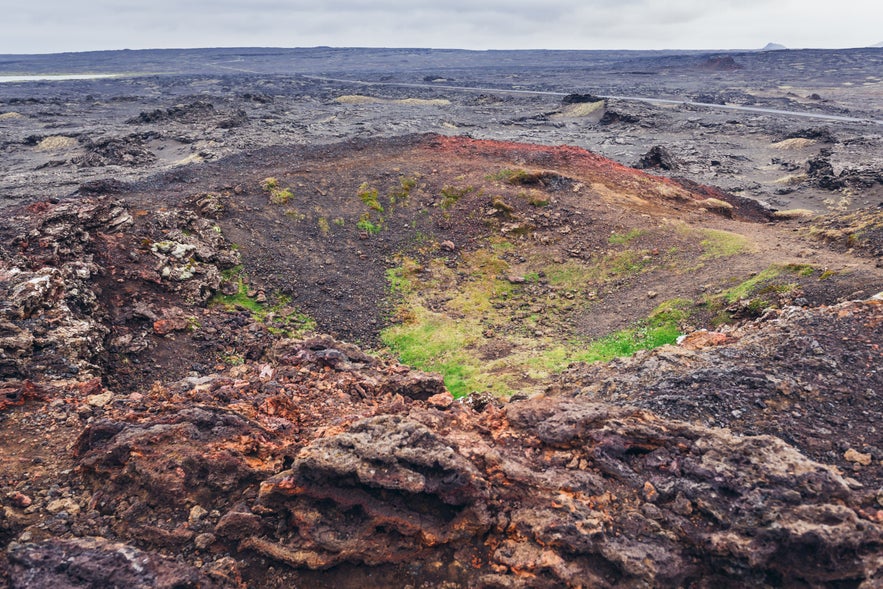 Just a few steps from the road, an easy trail leads you into one of the most striking volcanic landscapes on the Reykjanes Peninsula. The walk starts at a small lay-by along Road 425, where a visible path heads toward the nearest crater.
Just a few steps from the road, an easy trail leads you into one of the most striking volcanic landscapes on the Reykjanes Peninsula. The walk starts at a small lay-by along Road 425, where a visible path heads toward the nearest crater.
It’s a short, steady hike, only 0.13 miles (200 meters) one way, with a gentle elevation gain of 113 to 150 feet (34 to 46 meters). In just 3 to 6 minutes, you’ll find yourself standing at the rim of an ancient crater.
The trail winds through rough black lava formations, climbing toward what may be a small caldera or fissure crater. At the top, the landscape opens up in every direction. You can walk along the rim or even down inside to get a better feel for the power that shaped this terrain.
 All around you, dark volcanic hills ripple across the land, broken only by wisps of steam in the distance and the shimmer of the Atlantic Ocean on the horizon.
All around you, dark volcanic hills ripple across the land, broken only by wisps of steam in the distance and the shimmer of the Atlantic Ocean on the horizon.
This is one of the few places where you can safely step inside a crater formed by a centuries-old eruption. It’s a short climb with a big payoff, offering a rare and unforgettable look at Iceland’s volcanic heart.
Tip: If you want a more intense similar activity, book the Inside the Volcano Thrihnukagigur tour from Reykjavik. Or check out the top volcanic experiences in Iceland.
Walk Among 800-Year-Old Lava Fields
 Step off the crater path and you’ll find yourself surrounded by one of the most quietly dramatic features of the Reykjanes Peninsula: an 800-year-old lava field that stretches out in every direction. At first glance, it may look lifeless, a sea of black sand and jagged rock, but take a closer look and you’ll see that the landscape is far from barren.
Step off the crater path and you’ll find yourself surrounded by one of the most quietly dramatic features of the Reykjanes Peninsula: an 800-year-old lava field that stretches out in every direction. At first glance, it may look lifeless, a sea of black sand and jagged rock, but take a closer look and you’ll see that the landscape is far from barren.
Tiny alpine flowers push through the cracks, and patches of moss and lichen cling to the volcanic rock. Even inside the fractured gaps, life is beginning to return. It’s a reminder that while this land was once molten and destructive, it’s now evolving, slowly and stubbornly, into something new.
Beneath your feet, loose chunks of lava lie scattered across the weathered black sand, which is itself made from finely ground volcanic rock. Look closely and you’ll notice the lava isn’t just black, there are deep reds, hints of purple, and even flashes of glassy blue.
These rocks have been shaped by fire, fractured by frost, and worn down by wind over eight centuries. Touch one, and you’re literally holding a piece of Iceland’s explosive past.
Tip: For a similar experience, check out the black sand beaches in Iceland.
Follow The Hundred Crater Trail
 For those looking to explore beyond the roadside crater, the Hundred Crater Trail offers a deeper dive into the volcanic terrain of the Reykjanes Peninsula. This 8-mile (13-kilometer) signposted hiking route winds through a dramatic landscape shaped by centuries of eruptions, including parts of the Stampar Lava Field itself.
For those looking to explore beyond the roadside crater, the Hundred Crater Trail offers a deeper dive into the volcanic terrain of the Reykjanes Peninsula. This 8-mile (13-kilometer) signposted hiking route winds through a dramatic landscape shaped by centuries of eruptions, including parts of the Stampar Lava Field itself.
The trail begins at Valahnukur Cliff (Valahnúkur), near the tip of the peninsula. From there, it passes through the Reykjanes geothermal zone, skirting bubbling vents, rugged slag and scoria cones, and the striking tuff mountain of Syrfell (Sýrfell).
As the path continues, it approaches the Stampar craters, weaving along the western edge of the crater closest to the road. From here, it stretches inland over rough pahoehoe lava (pāhoehoe), black sand dunes, and across the seaward side of the Reykjanes Power Plant.
Along the way, hikers encounter a seemingly endless line of small, fragile volcanic craters, each a remnant of past fissure eruptions. While the terrain is uneven and often exposed, the route offers one of the most immersive ways to experience the raw geology of Southwest Iceland.
How To Get to Stampar Crater Row
 Stampar Crater Row is easy to reach, especially if you're already exploring the Reykjanes Peninsula or heading to the Blue Lagoon. There’s no direct public transport, but it’s an easy stop by car, either as a scenic detour from Reykjavik (Reykjavík) or a first glimpse of Iceland’s volcanic landscape after landing.
Stampar Crater Row is easy to reach, especially if you're already exploring the Reykjanes Peninsula or heading to the Blue Lagoon. There’s no direct public transport, but it’s an easy stop by car, either as a scenic detour from Reykjavik (Reykjavík) or a first glimpse of Iceland’s volcanic landscape after landing.
Here are your options for getting to Stampar Crater Row.
How To Get to Stampar Crater By Car
Reaching Stampar Crater Row by car is quick and easy, especially if you’re visiting the Blue Lagoon or driving from Keflavik International Airport. Instead of staying on the main roads, take Route 425 (Nesvegur) for a more scenic detour along the coast. The craters lie on the western side of the Reykjanes Peninsula, just off the road.
Travel times are short: it’s about 25 minutes from Keflavík International Airport, 15 minutes from the Blue Lagoon, and roughly 1 hour from Reykjavik.
There’s a small designated lay-by with a sign that shares a bit of the area’s geological history. From there, you can follow a short, somewhat-worn trail through loose black sand up to the rim of the nearest crater.
Parking is free and usually uncrowded, making it a convenient stop for a quick hike or photo break as you explore the peninsula.
Tip: For a smooth and seamless travel, rent a car in Iceland in advance. Also, consider booking one of the best self-drive tours in Iceland to learn more about the natural landmarks along the route as you go.
How To Get to Stampar Crater By Hiking
Hiking to Stampar Crater Row is possible via the Hundred Crater Trail. It’s an 8-mile (13-kilometer) signposted route that winds through some of the most geologically active areas on the Reykjanes Peninsula.
The trail starts near Valahnukur Cliff (Valahnúkur) at the very tip of the peninsula. Then, it runs inland past steaming geothermal zones, slag and scoria cones, the Syrfell Mountain (Sýrfell), and through the edge of the Stampar Lava Field.
This route brings you directly to the crater row, crossing black sand dunes and rugged pahoehoe lava flows on the seaward side of the Reykjanes Power Plant.
The trail is rated moderate, with some uneven and exposed sections. The duration of the hike can vary depending on pace and conditions, but hikers should allow approximately 4 to 6 hours to complete the trail.
Note: Since there are no services along the way, hikers should bring water, wear sturdy footwear, and be prepared for rapidly changing weather conditions. Read our guide on hiking in Iceland to prepare yourself before your trip.
If you're looking for a more immersive approach to Stampar Crater Row, this is one of the most rewarding ways to experience it.
How To Get to Stampar Crater By Guided Tours from Reykjavik
Several guided day tours from Reykjavik include stops near Stampar Crater Row, often as part of broader itineraries exploring the Reykjanes Peninsula. These tours offer a hassle-free way to visit the area with expert commentary and transportation included.
One of the best options is the 5-hour Mid-Atlantic Ridge and Reykjanes Peninsula jeep tour, which takes you through dramatic geothermal zones, coastal cliffs, and volcanic landmarks, including Stampar Crater Row. Led by knowledgeable local guides, it’s a great choice for travelers who want to explore the region’s raw geology without the stress of self-driving.
Best Time To Visit Stampar Crater Row
 Stampar Crater Row is accessible year-round, but the best time to visit is from late spring through early autumn. During this period, the weather is more stable, daylight hours are long, and the trails are easier to navigate, making them ideal for hiking or quick roadside stops.
Stampar Crater Row is accessible year-round, but the best time to visit is from late spring through early autumn. During this period, the weather is more stable, daylight hours are long, and the trails are easier to navigate, making them ideal for hiking or quick roadside stops.
During Icelandic winter, the area can still be visited, but expect short daylight hours, strong winds, and the possibility of snow or ice covering the trail. If conditions are clear, the stark winter light makes the lava fields look even more dramatic. Plus, there’s always a chance of catching the northern lights if you visit after dark.
Regardless of the season, check weather forecasts and road conditions before setting out. This is an exposed area, and even a short visit can feel remote if the weather turns.
Tips for Visiting Stampar Crater Row
 Stampar Crater Row may be easy to reach, but it’s still a rugged and sensitive environment, so a little preparation goes a long way. Here are a few tips to make the most of your visit:
Stampar Crater Row may be easy to reach, but it’s still a rugged and sensitive environment, so a little preparation goes a long way. Here are a few tips to make the most of your visit:
- Check for volcanic activity: The Reykjanes Peninsula has seen renewed eruptions since 2021. While Stampar Crater Row is usually safe, nearby activity can lead to sudden road closures or detours. Always check Safetravel.is and Vedur.is for the latest updates.
- Wear sturdy shoes: The terrain is uneven, with loose black sand and sharp lava rocks underfoot. Good footwear makes all the difference.
- Stay on visible paths: While access is allowed, the volcanic ground is fragile. Stick to worn trails to help preserve the landscape.
- Check the weather: The area is fully exposed to the elements. Bring layers, and avoid hiking in high winds or poor visibility.
- Bring water and supplies: There are no facilities on site (no toilets, food, or shelter), so plan accordingly.
- Respect the silence: This is a peaceful, remote place. Enjoy the stillness and take your time walking around.
Attractions Nearby Stampar Crater Row
 The western Reykjanes Peninsula is full of rugged beauty and active geology, and Stampar Crater Row sits right in the middle of it. If you’re already in the area and looking for more things to do on the Reykjanes Peninsula, it’s worth exploring a few other nearby sights, most of which are just a short drive away:
The western Reykjanes Peninsula is full of rugged beauty and active geology, and Stampar Crater Row sits right in the middle of it. If you’re already in the area and looking for more things to do on the Reykjanes Peninsula, it’s worth exploring a few other nearby sights, most of which are just a short drive away:
- Gunnuhver Geothermal Area: A steaming, rumbling geothermal field just down the road from Stampar Crater Row. Wooden walkways take you past boiling mud pots and massive steam vents in one of Iceland’s most active surface geothermal zones.
- Reykjanes Lighthouse (Reykjanesviti): Iceland’s oldest lighthouse, perched dramatically above the Atlantic Ocean. It offers wide views of the ocean, steam clouds, and surrounding lava fields.
- Valahnukamol (Valahnúkamöl): A wild, wave-battered stretch of coastline just below the lighthouse. It’s a great place to feel the full force of the Atlantic Ocean and spot seabirds nesting on nearby cliffs.
- Bridge Between Continents: A symbolic footbridge over the tectonic rift between the North American and Eurasian plates. A quick, family-friendly stop that ties perfectly into the area’s geological story.
- Brimketill Lava Rock Pool: A natural lava formation shaped like a pool, right at the ocean’s edge. While not for swimming, it’s a dramatic photo stop, especially during high surf.
- Blue Lagoon: One of Iceland’s most famous attractions, located just a short drive from Stampar Crater Row. Ideal for relaxing after a hike or crater visit, with geothermal bathing in mineral-rich, milky blue waters.
- Hafnarberg Sea Cliffs: A little farther out but worth the detour, these high, windswept cliffs are known for their dramatic drop-offs and birdlife in Iceland. A good spot for a peaceful coastal walk away from crowds.
Explore the Ancient Beauty of Stampar Crater Row
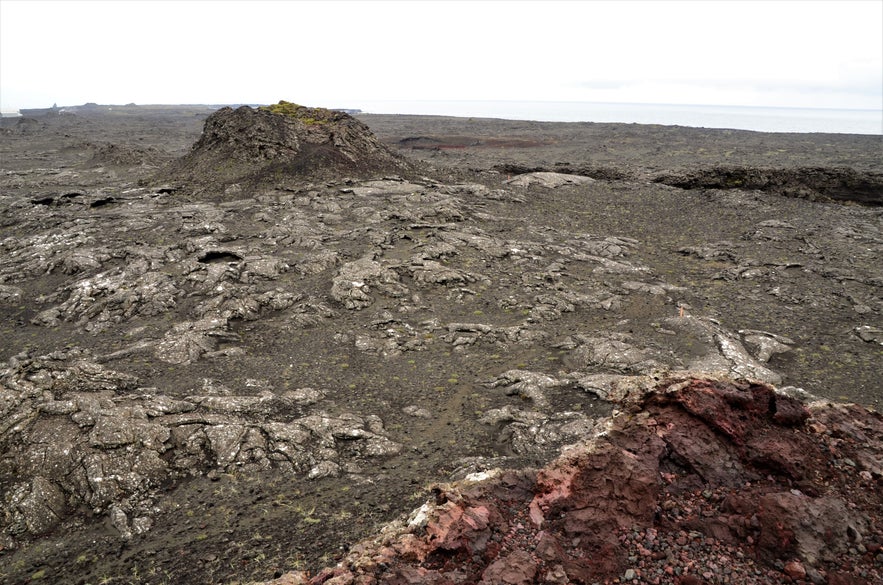 Stampar Crater Row may not be one of Iceland’s headline attractions, but that’s exactly what makes it special. Quiet, haunting, and shaped by forces still active beneath the surface, it offers a rare chance to stand face-to-face with the raw geology of the Reykjanes Peninsula.
Stampar Crater Row may not be one of Iceland’s headline attractions, but that’s exactly what makes it special. Quiet, haunting, and shaped by forces still active beneath the surface, it offers a rare chance to stand face-to-face with the raw geology of the Reykjanes Peninsula.
Whether you stay for just a few minutes or take your time walking the trails, this otherworldly landscape leaves a lasting impression—one of ancient eruptions, silent craters, and a land that’s still evolving before your eyes.
